
Nestled in the North Atlantic Ocean, midway between Scotland and Iceland, the Faroe Islands is one of Europe’s last hidden gems, bestowed with unparalleled scenery of capes, waterfalls and rock formations. Part of the kingdom of Denmark, the Faroe Islands might be a semi-autonomous entity, yet the sense of national pride and distinctiveness is far ahead of many global superpowers, evidently, this island nation of merely 50,000 people has its own language, cuisine and a multitude of traditions that encompasses all facets of life. Any visitor who’ll venture out to this Nordic archipelago is guaranteed a lifetime experience for many years to come, fully intensified if none of the major things the Faroes have to offer is skipped.
Governed as an autonomous region within the kingdom of Denmark, when it comes to geographical features, the Faroe Islands couldn’t be more strikingly different than their larger peer, Denmark, as while the latter is largely flat, the Nordic archipelago has some of the most dramatic landscape anywhere in the world, dominated by mountain ridges, vertical cliffs and oddly shaped rock formations.
One of the best ways to thoroughly explore all the islands’ painfully beautiful sights is by renting a car and get yourself into plenty of secluded natural gems that otherwise would be inaccessible, most of which provide a scenic hiking experience which is second to none.
A large percentage of the Faroese coastline dramatically meets the ocean with vertical cliffs, some of which are hundreds of meters tall. The island of Suðuroy is home to one of the nation’s most outstanding natural wonders, the narrow cleft of Rituskor, a small gap between two cliffs, framing a piece of blue oceanic water.

Cleft of Rituskor
photography by: Andri Gerðisá
Forcefully plunging from a 30 meter tall cliff near the village of Gásadalur in the island of Vágar, Múlafossur Waterfall is unquestionably one of the country’s highlights, part of a stunning global rarity, where a waterfall cascades directly into the ocean.
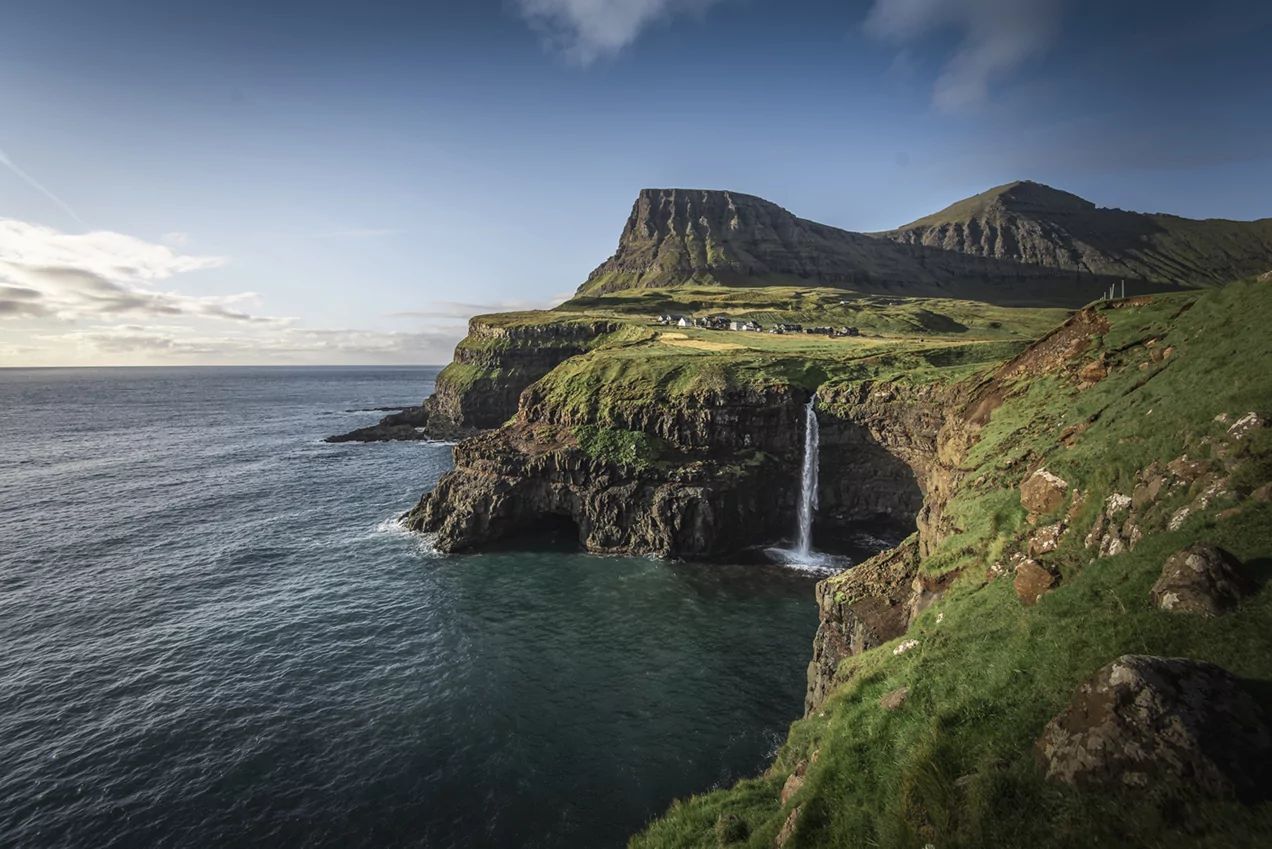
Múlafossur Waterfall
photography by: Andri Gerðisá
The area around Fuglafjørður village in Eysturoy offers some remarkable panoramic views of the island’s rigid and mountainous terrain, including the numerous inlets that carve into the insular landscape.
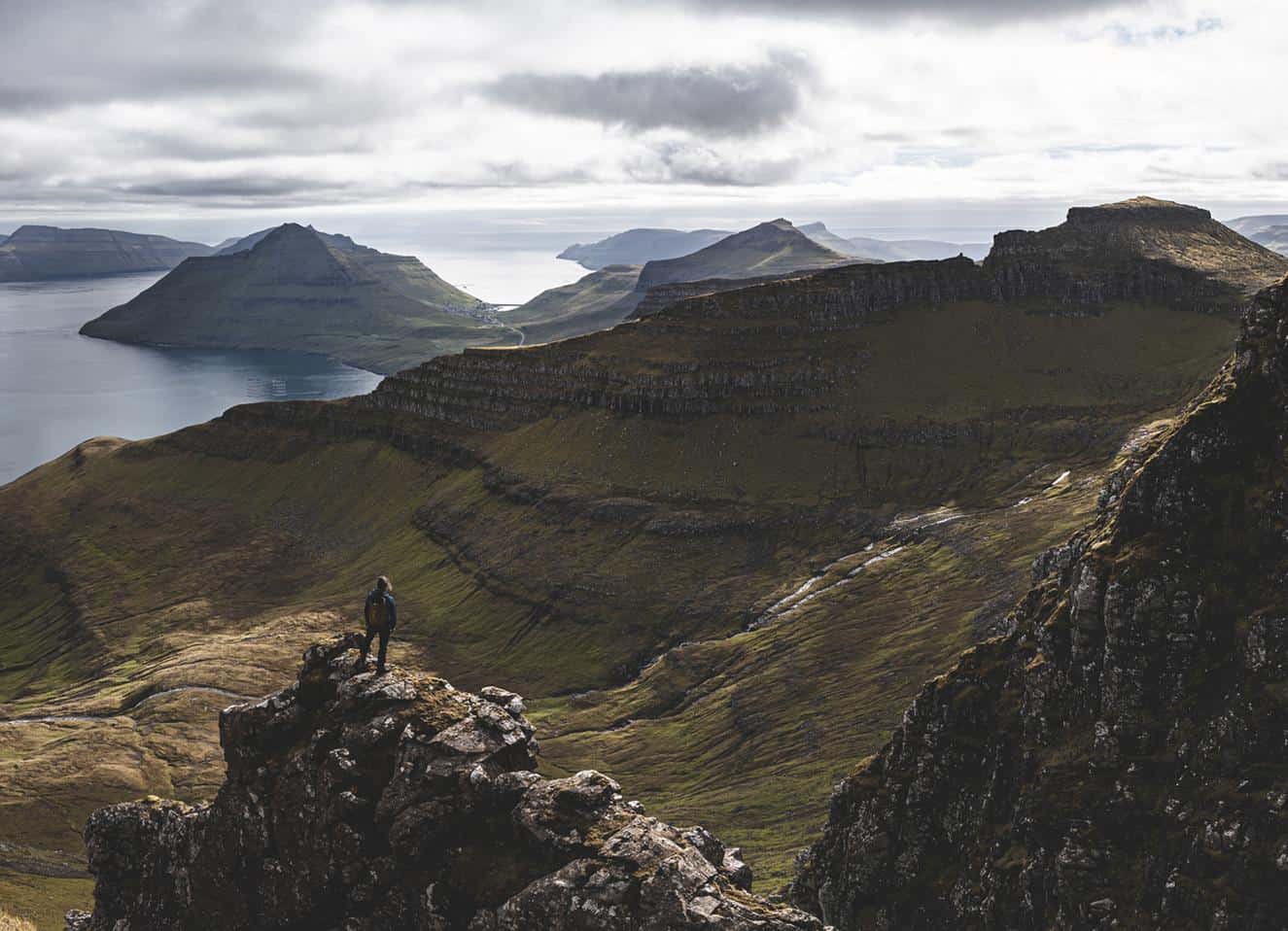
Fuglafjørður
photography by: Andri Gerðisá
Situated on the southern tip of Suðuroy Island, Akraberg is a remote rocky cape, which excluding the small and insignificant skerry of Munkurin, is Faroe Islands southernmost point.
Built in 1909, Akraberg Lighthouse stands 14 meters tall, warning and guiding ships in the notoriously dangerous waters around. Originally, the lighthouse was part of a small settlement, yet following a severe hurricane in 1988, it was completely abandoned, with only two empty houses remaining ever since.
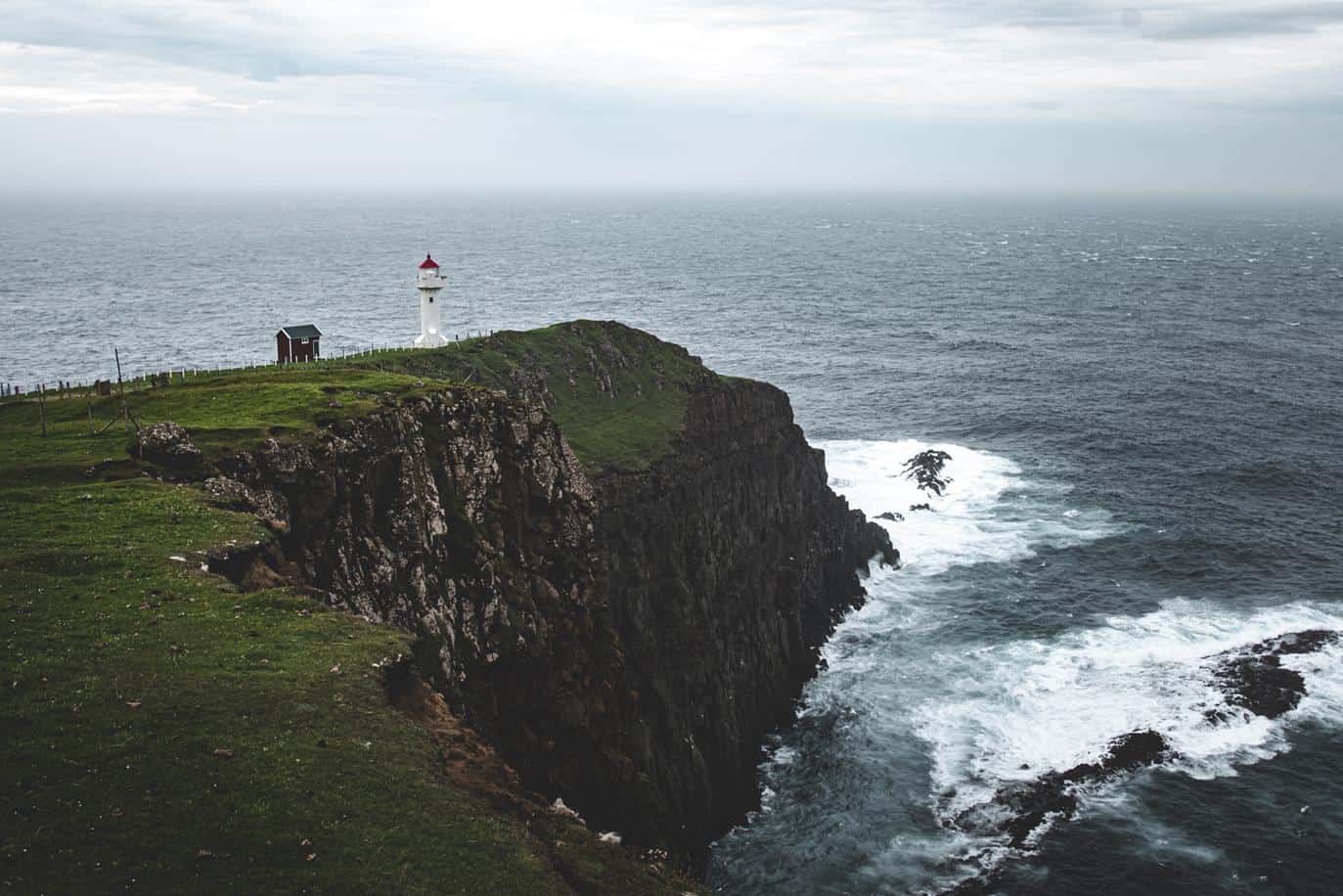
Akraberg Lighthouse
photography by: Andri Gerðisá
The Faroes have an extensive network of roads and sub-sea tunnels, efficiently connecting major parts across the islands. While the vast majority of the roads are high-quality, some have sharp curves, correlating to the hilly topography, one of which is the iconic road to the village of Norðradalur in the island of Streymoy, renowned for its winding shape and wondrous setting along a coastal valley.
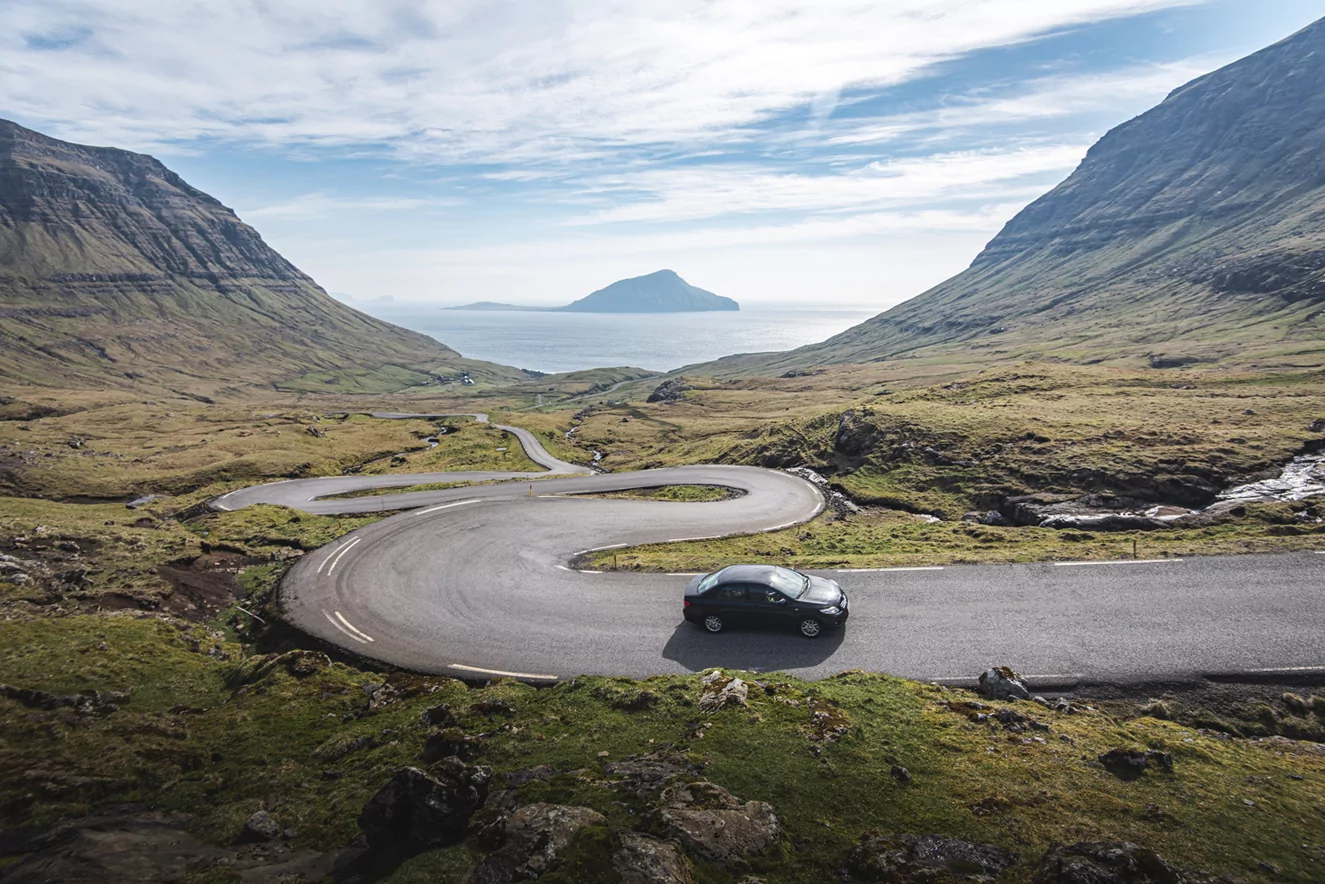
Norðradalur
photography by: Andri Gerðisá
Take note that the weather patterns across the Faroe Islands are exceedingly unpredictable, and while the islands have a relatively mild climate temperature-wise, stormy weather can occur instantaneously.
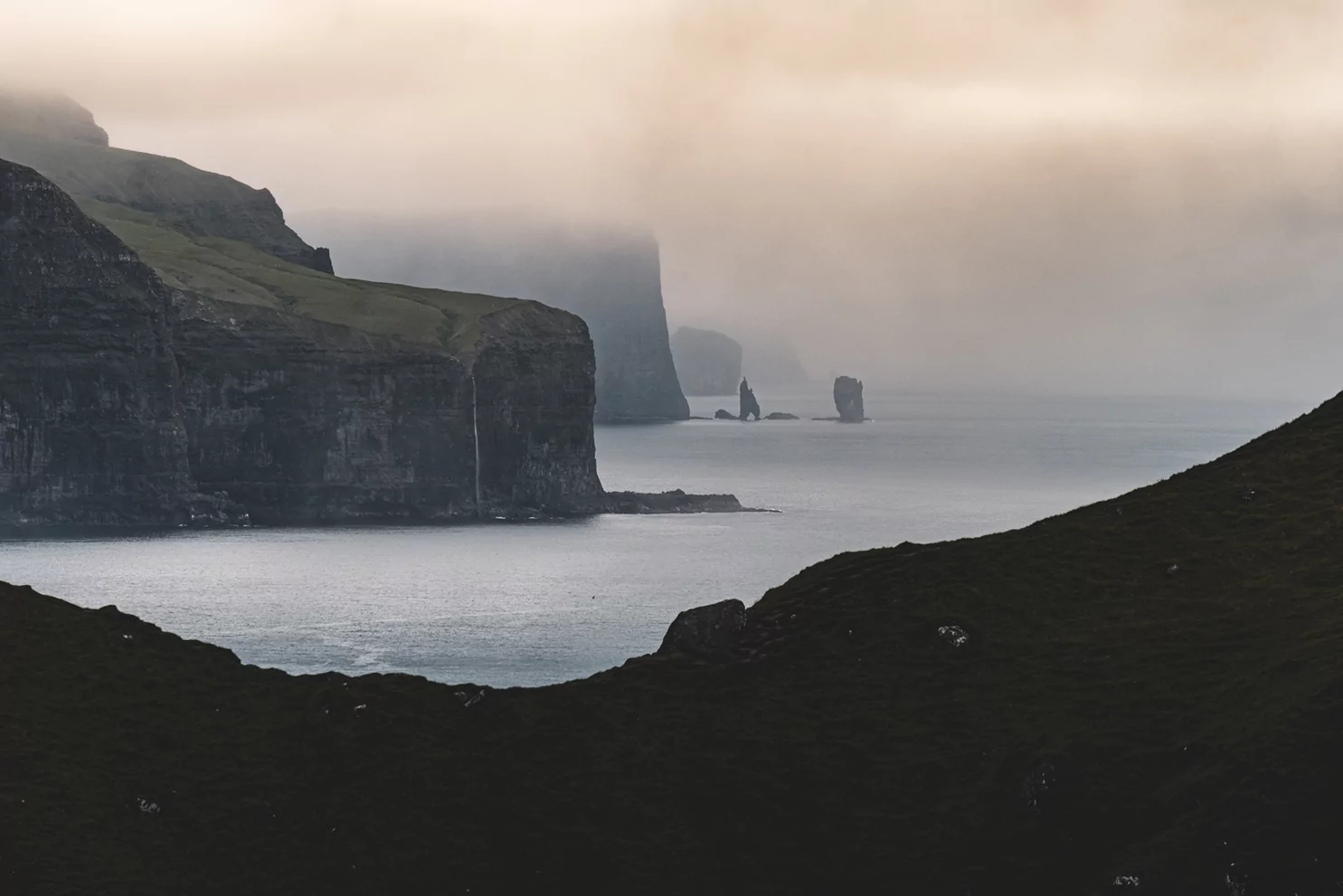
photography by: Andri Gerðisá
The Faroes are bestowed with plenty of rock formations, but none are as iconic and impressive as the sea stacks off the coast of Eysturoy Island, known as Risin og Kellingin, or the Giant and the Witch.
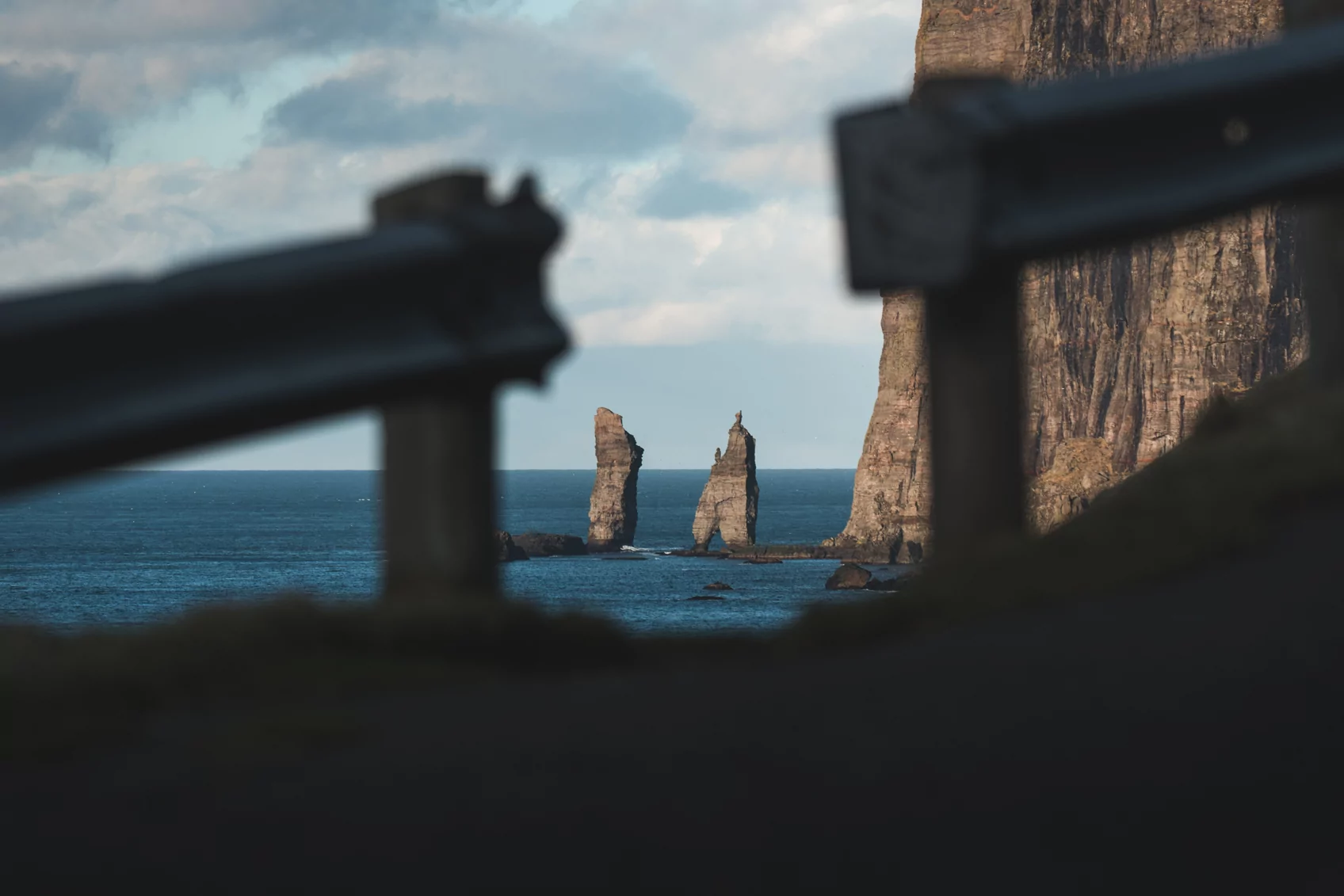
Risin og Kellingin
photography by: Andri Gerðisá
According to an ancient legend, Icelandic groups of giants had a strong yearn to possess the Faroese archipelago, therefore, a giant and his wife were sent to bring the islands into Iceland. The couple arrived during nighttime to the mountain of Eiðiskollur, in the northwestern part of the Faroes, attempting to drag the Island by tying a rope around the mountain, yet this tactic turned out as unsuccessful despite the relentless effort. As night creatures, the giant and the witch knew that they had to avoid sunlight if they didn’t want be transformed into stones, however, their ongoing attempts to drag the islands distract them and as a result they didn’t manage to find a hiding place before sunrise, consequently the couple turned into a pair of boulders, jutting out from the North Atlantic Ocean.
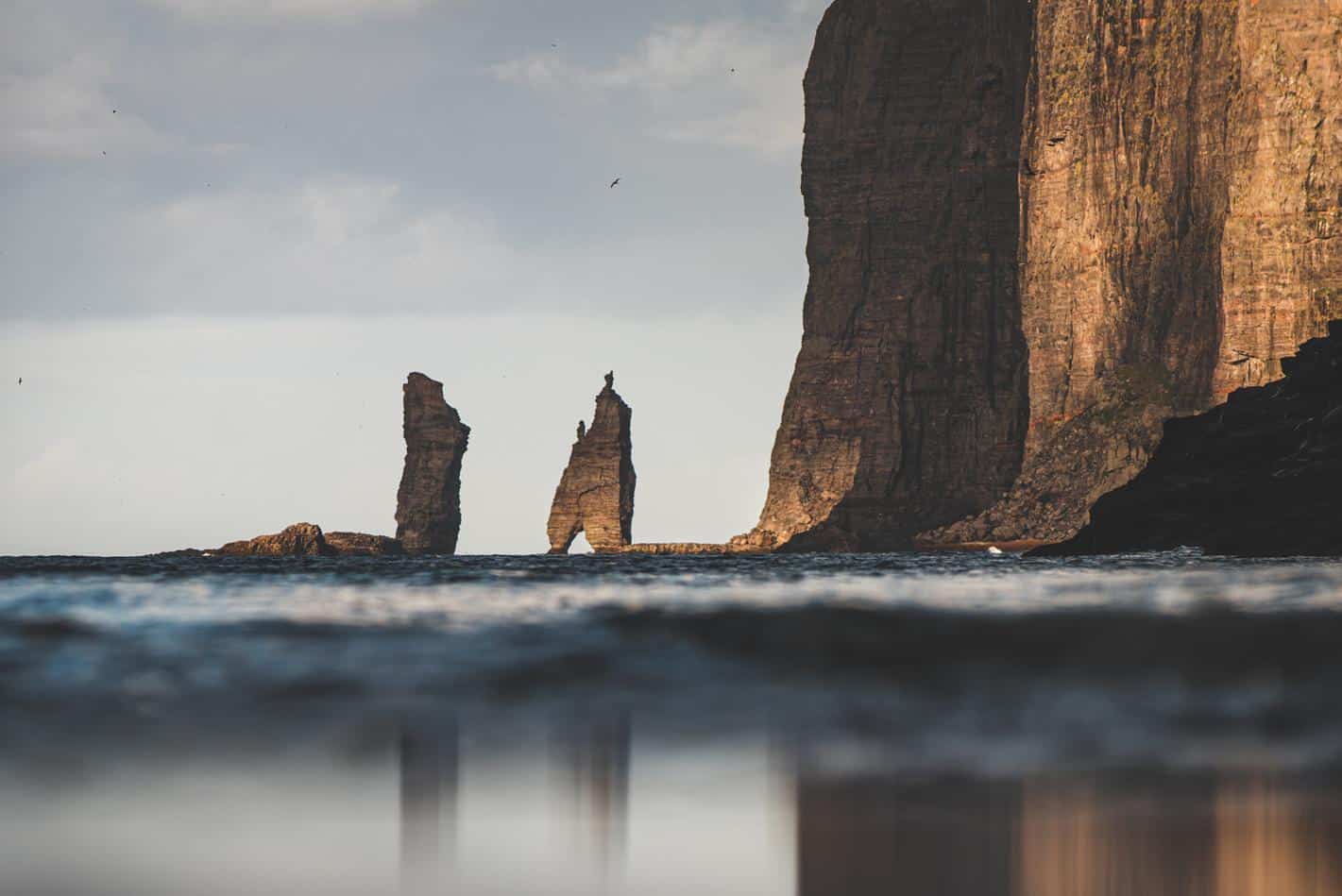
Risin og Kellingin
photography by: Andri Gerðisá
With an average elevation of roughly 300 meters above sea level, the Faroe Islands are dominated by formidable ridges of mountains, culminating in the peak of Mt. Slættaratindur at 880 meters.

photography by: Andri Gerðisá
The Faroese archipelago is home to numerous lighthouse, all of which breathtakingly perching on promontories. The red and white lighthouse near the village of Leynar marks the entrance to the channel between the islands of Streymoy and Vágar.
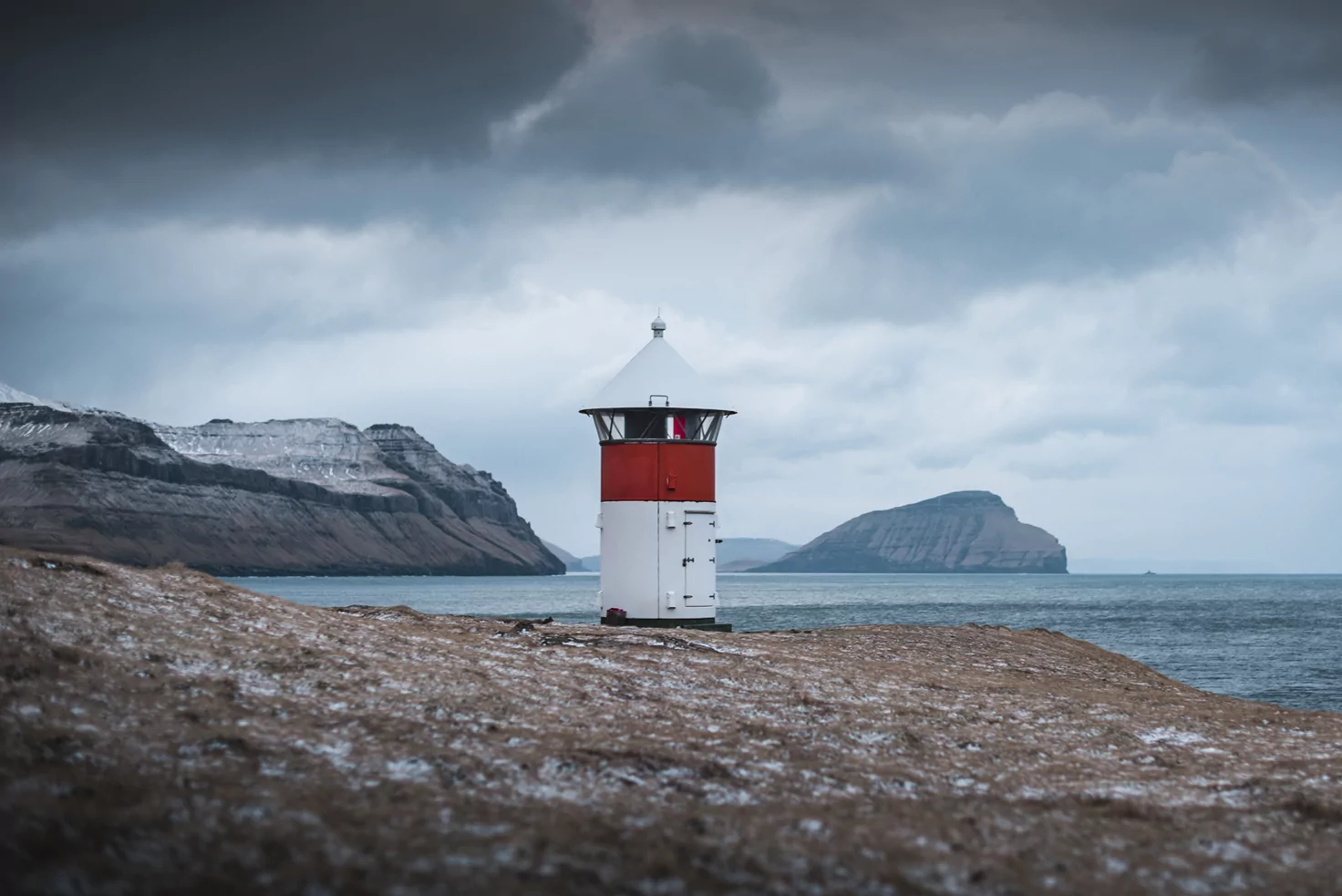
Leynar Lighthouse
photography by: Andri Gerðisá
As you’ve probably understood by now, the scenery in this rocky speck at the North Atlantic is mind boggling regardless of any weather conditions, nevertheless, during sunsets and sunrises it gets biblically epic, when the sky are colored by yellowish and pinky hues, somewhat providing a divine inspiration.

photography by: Andri Gerðisá
When venturing out of the capital, Tórshavn, it is too often the case where you find yourself vastly outnumbered by animals, as both livestock animals and sea birds are incredibly abundant throughout the islands. Almost any encounter with animals is a source of joy and excitement, and the Faroe Islands are no exception, yet in contrary to many countries where animals are confined to national parks or farms, the Faroese animals roam freely across the green landscape, giving travelers an opportunity to experience a lot of authentic and unrestrained moments.
While all land mammals in the Faroes were introduced by humans, there are numerous endemic species of seabirds and marine mammals, most notably puffins, razorbills and guillemots.
Originally introduced from Scotland, the highland cattle are a breed perfectly suited to survive and prosper in the Faroese climate and landscape. The coat of long hair protects them from the harsh wind and rainfall, while their ability to graze in poor pastures that other sorts of cattle tend to avoid makes them extremely resilient to the conditions present on the islands.

Highland cattle
photography by: Andri Gerðisá
It’s difficult to overstate the immense historical importance of the Faroese Sheep to the local economy and culture, evident by the archipelago’s name, literally meaning “The Islands of Sheep”, furthermore, the national coat of arm features a figure of horned ram. Historically, sheep wool served as a major source of income for centuries, fueled by the Danish demand for warm clothing, however, nowadays the Faroese sheep are mostly grown for their meat, extensively incorporated in the local cuisine.
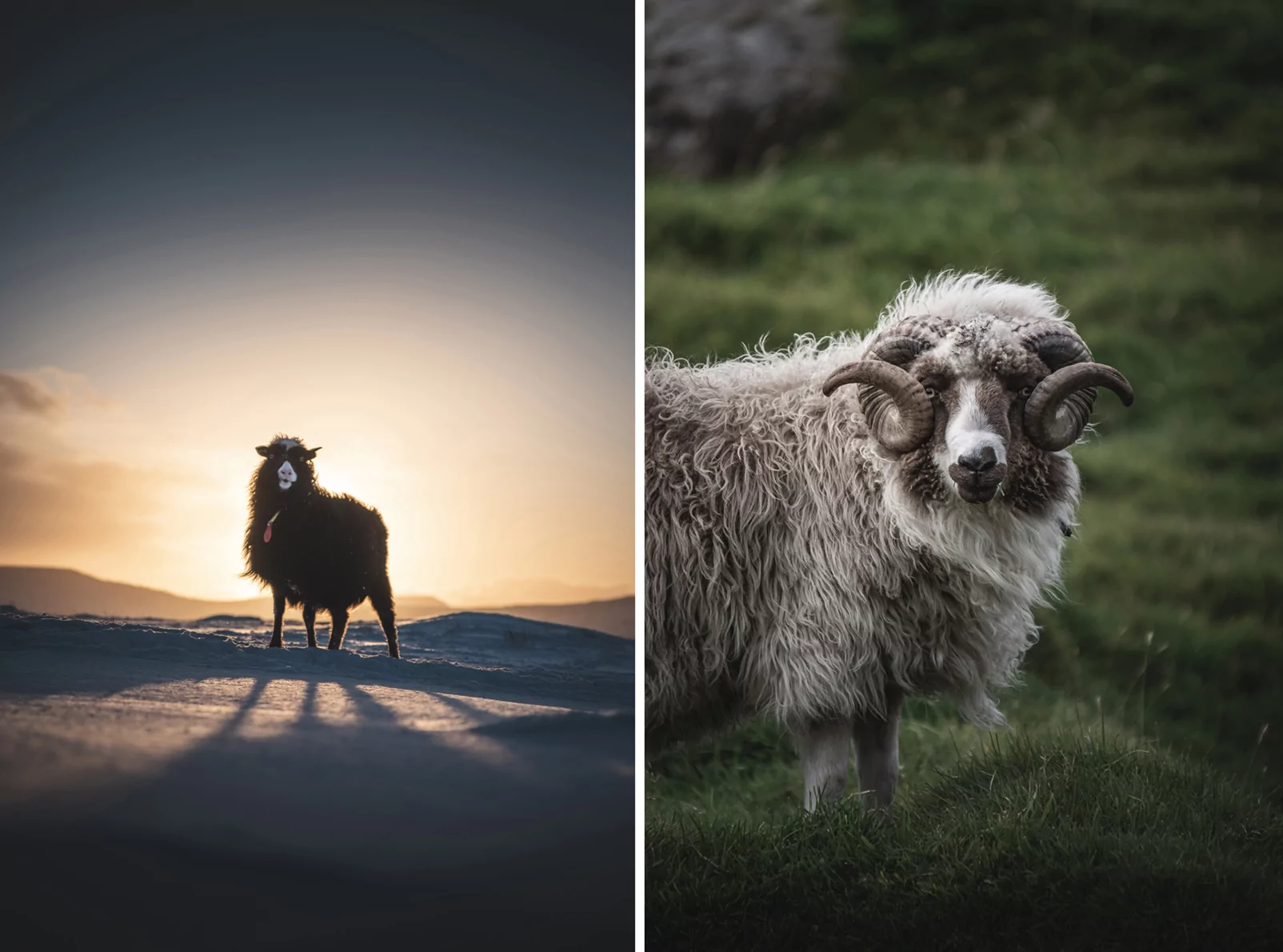
Faroese sheep
photography by: Andri Gerðisá
In 2017, a local Faroese woman named Durita Andreassen launched an exceptional campaign, strapping 360-degree camera on a couple of sheep, resulting in breathtaking photos, all of which were uploaded to Google maps according to their coordinates, while at the same time she also petitioned for the inclusion of the Faroe Islands in Google street view service. Following the campaign’s sheer success and popularity, Google decided to send professional equipment, used by locals and tourist alike to achieve full coverage several months later that year.
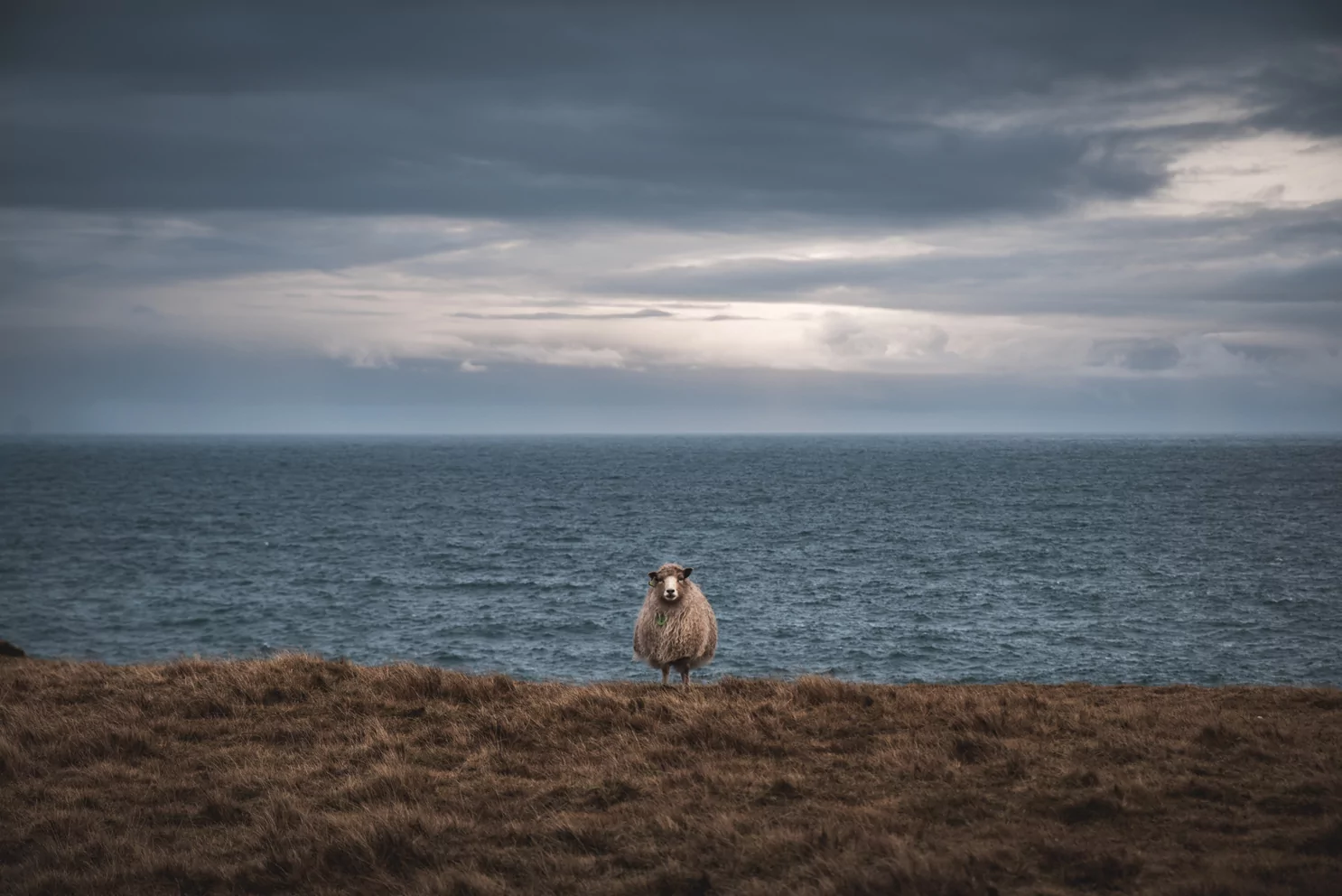
Faroese sheep
photography by: Andri Gerðisá
Deemed as an incredibly iconic wild animal in the Faroes, the adorable Atlantic Puffins are the most abundant seabirds in the islands, flocking in their millions during the breeding seasons. Interestingly, puffins are monogamic, raising their chicks with a lifetime partner.

Puffin
photography by: Andri Gerðisá
Puffins are still hunted for their meat, using a special three-meter-long pole net locally known as Fleygingarstong. However, due to the recent dwindling of puffin colonies allover the Faroes, a strict regulation has been enforced as part of a national effort to preserve the local population, drastically limiting the maximum number of harvested birds.
Puffin meat-based dishes can be found in many restaurants across the islands, whereas its freshly harvested heart is considered as a delicacy in some Nordic countries.
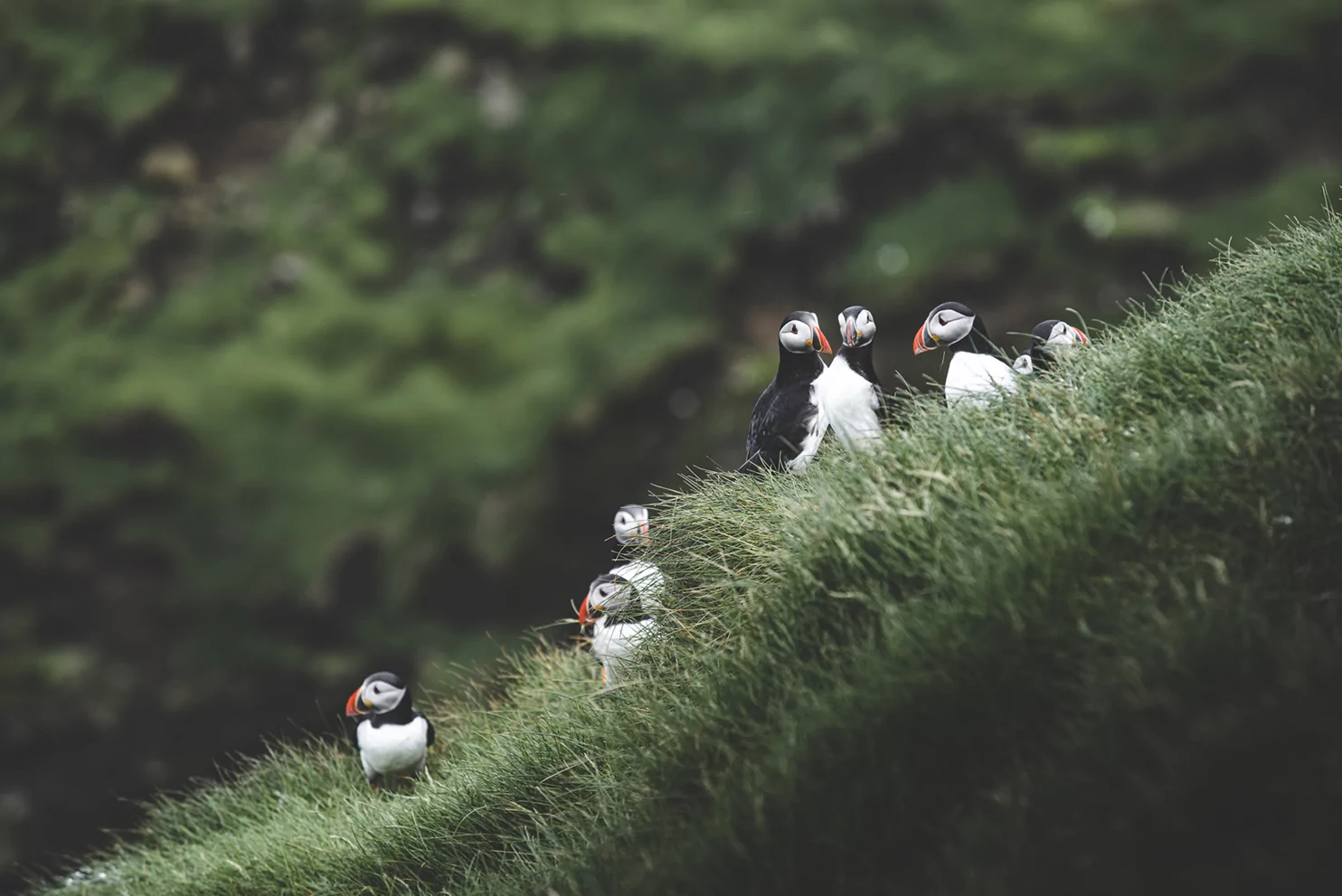
Puffins
photography by: Andri Gerðisá
Relative to its location in the far north, the Faroe Islands experience mild winters with average temperature ranging between 3°C to 5°C, mostly thanks to the North Atlantic Current. Nevertheless, in many parts, especially highlands and mountains, the weather can be much harsher, dominated by heavy snowfall and even hurricanes. While the tourist season begins at around May and culminates in July and August, venturing out to the Nordic archipelago during the winter is mostly left for the intrepid travelers among us.
While traveling to the Faroes in winter-time is obviously not without its downsides, like strong winds and the lack of daylight hours, yet this exceptional experience is visually and culturally rewarding in so many ways that offset any of the possible shortcomings.
The village of Funningur blanketed in white. During winter months, accommodation, flight tickets and car rentals are far cheaper, making any trip to the Faroe Islands much more affordable.
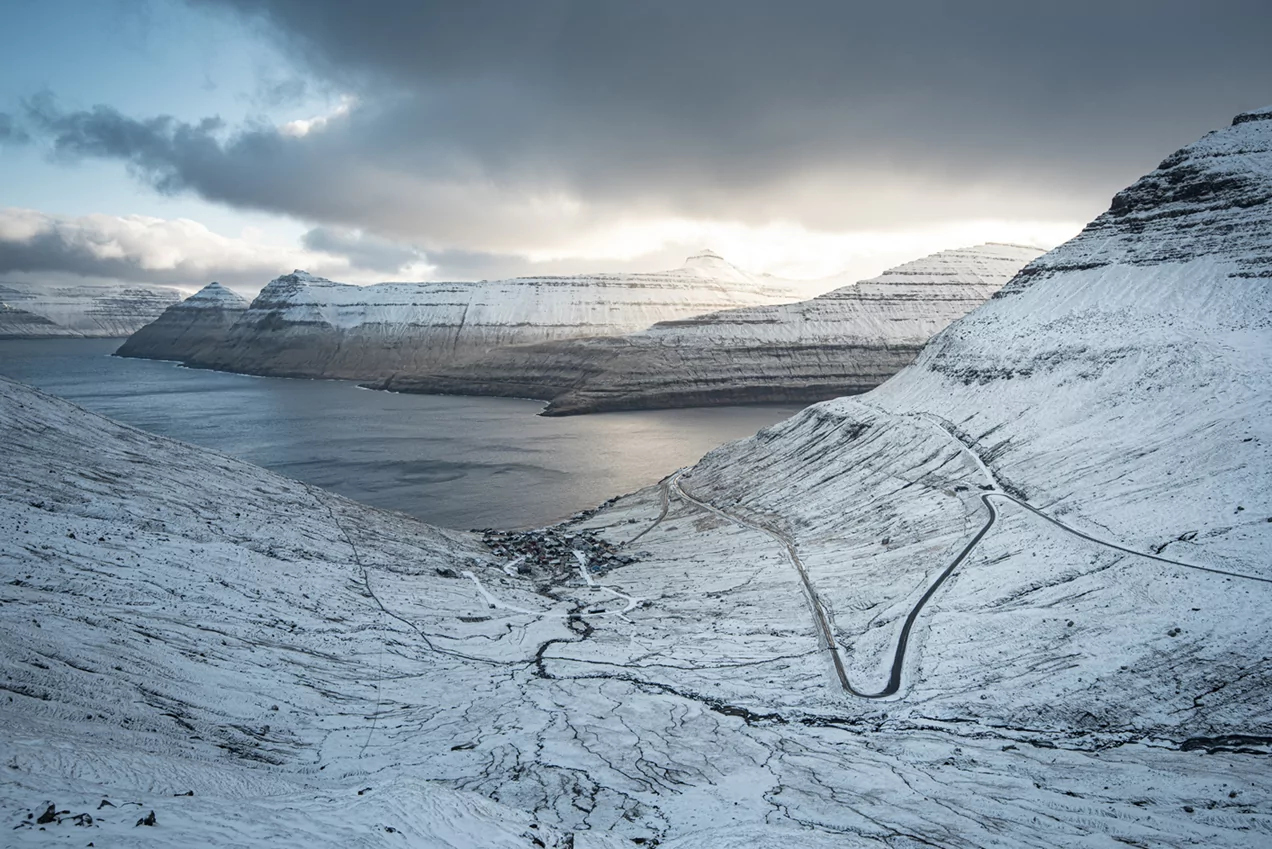
Funningur
photography by: Andri Gerðisá
One of the striking things about traveling to the Faroes during winter-time is being one of very few tourists, practically having the whole country for yourself, it couldn’t get more authentic than that!

photography by: Andri Gerðisá
The village of Hellurnar on the backdrop of snowy mountains. With less than six our of sunlight during the month of December, the spectacular aurora definitely makes up for any lack of vitamin D that might occur.
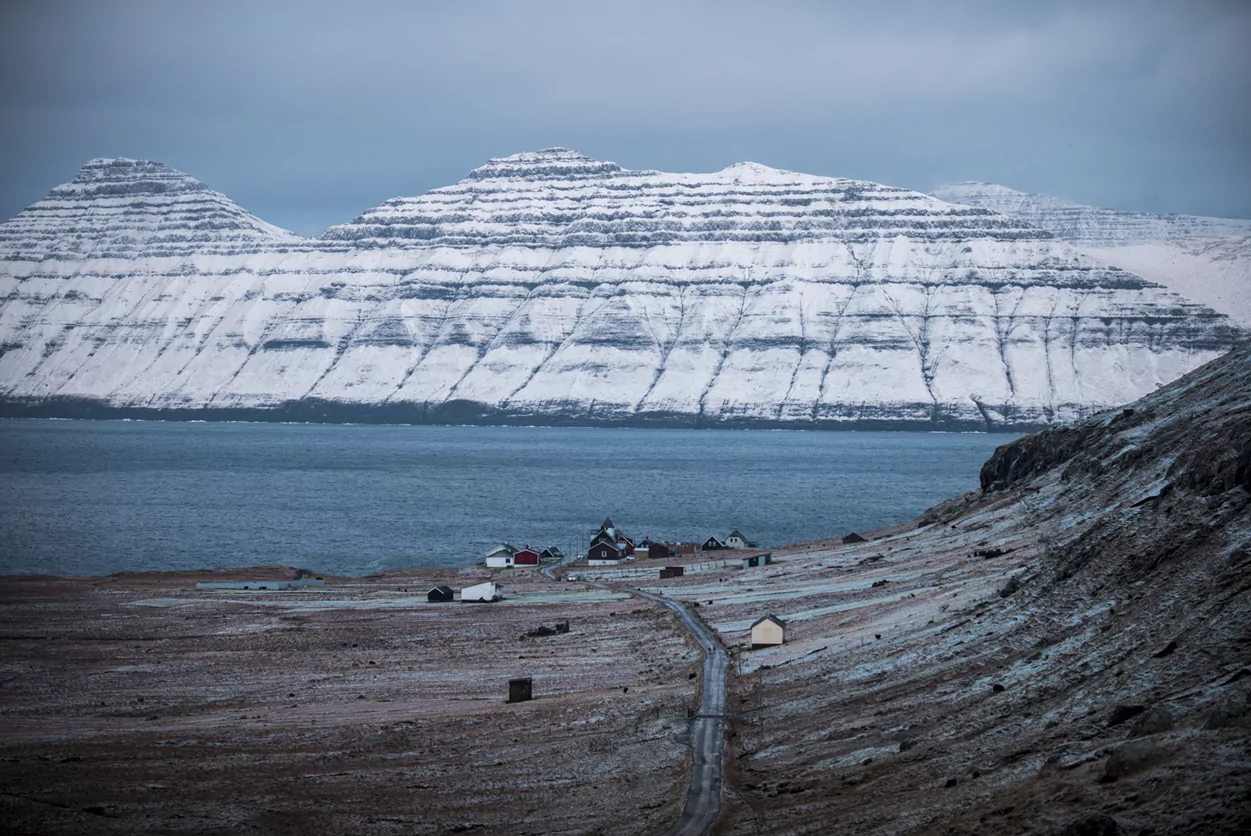
Hellurnar
photography by: Andri Gerðisá
Besides the snowy breathtaking scenery. The capital, Tórshavn, becomes the epicenter of the Faroese Christmas celebration, hosting festivities and events that serve as the perfect opportunity to interact with locals and experience a significant facet of their culture.
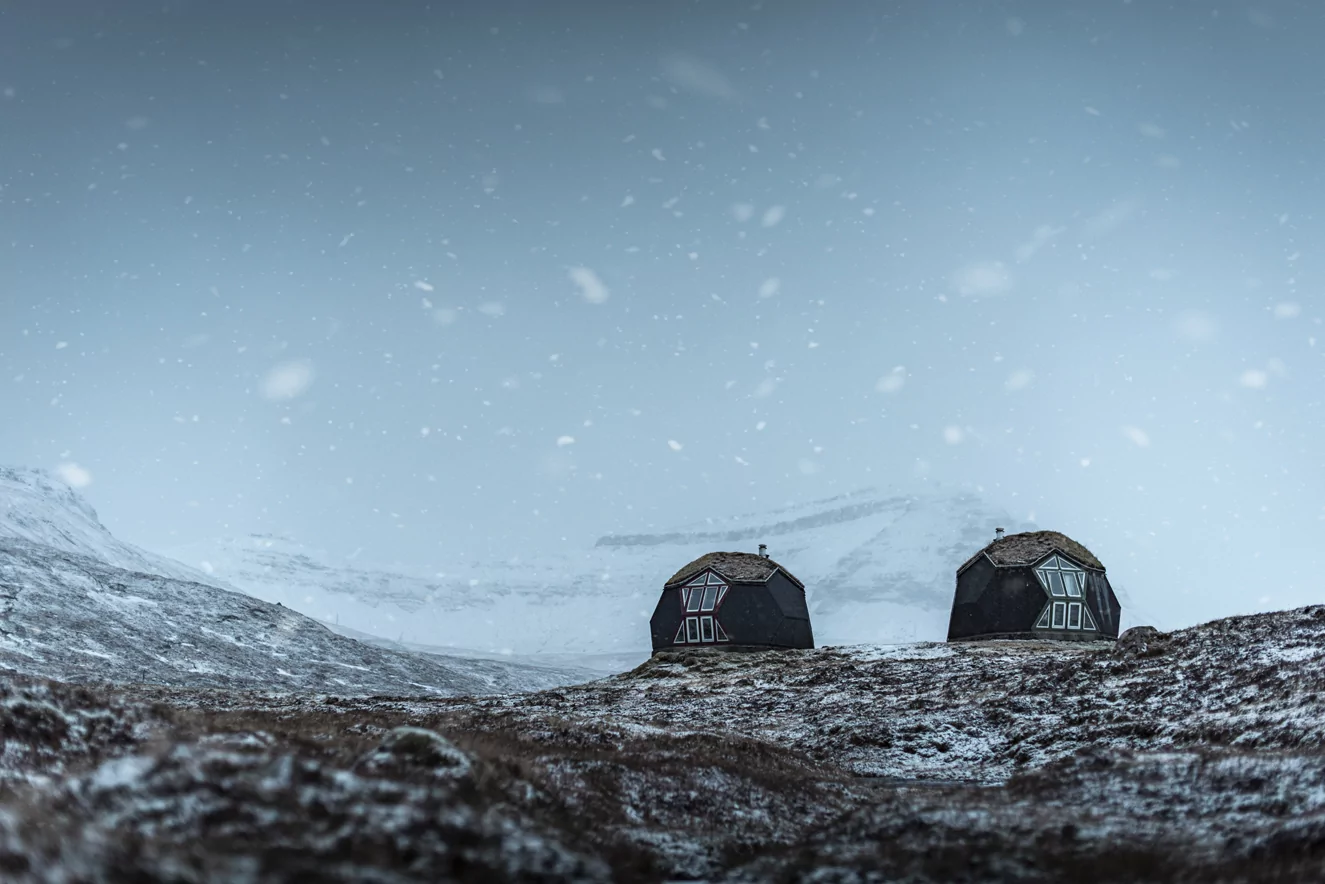
photography by: Andri Gerðisá
Home to dozens of small rural communities, the Faroese archipelago is centered around the capital city, Tórshavn, where roughly 40% of the islanders live, yet thanks to the nation’s extensive network of bridges and sub-sea tunnels, the prosperity is evenly distributed across the islands, including some of the most isolated towns and villages.
Historically, as the fishing industry developed, the villages with the more sophisticated docking facilities grew at a faster rate, leaving the rest behind even to these days. However, both small and medium-sized communities share one thing in common, an unparalleled natural beauty that engulfs any local settlement from all directions, harmoniously blending into its landscape, making even the most remote village a worthy destination by its own right.
Nestled along an inlet between several mountains, Funningur is allegedly the oldest village in the Faroe Islands, as according to the legend, its location is where Grímur Kamban, the first Viking who reached the islands, arrived to in the 9th century, ultimately planting the cultural seeds that grew into the modern-day Faroese nation.
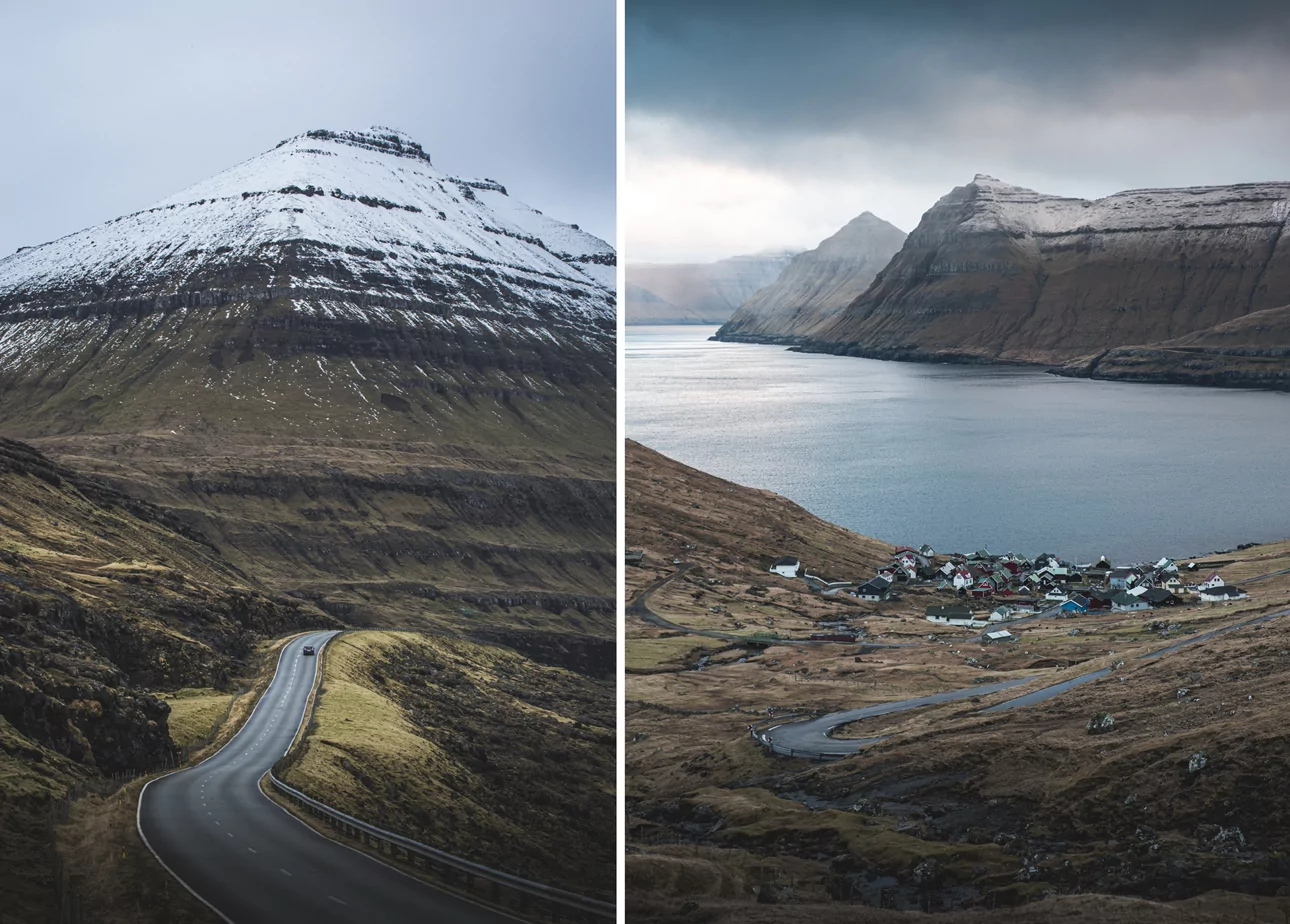
Funningur
photography by: Andri Gerðisá
Literally translated as gorge, the village of Gjógv in the northern tip of Eysturoy Island is named after the spectacular 200 meter long gorge, filled with seawater, linking the village with the nearby ocean. For centuries, the gorge has served as a natural harbor, while nowadays it’s mostly an eye-catching attraction and the main reason behind its growing popularity among tourists. Besides its beautifully carved gorge, the village also has a significant amount of well-preserved buildings, including a small tea-house that warms the soul and body of any thirsty sippers who might come around.

Gjógv
photography by: Andri Gerðisá
Tucked away on a narrow strip of land between two mountains on the island of Viðoy, Viðareiði is the northernmost village in the Faroe Islands, and a gateway to the world’s tallest promontory, Cape Enniberg, which is also the archipelago’s northernmost point.
While the village itself is not particularly distinct relative to other Faroese settlements, its sheer remoteness and stunning natural scenery make it one of the most worthwhile places to visit anywhere in the islands.
Surprisingly, despite its isolation, the village has two decent dining and accommodation options, one of which is Hotel Norð, offering a plethora of reasonably prices Faroese dishes.
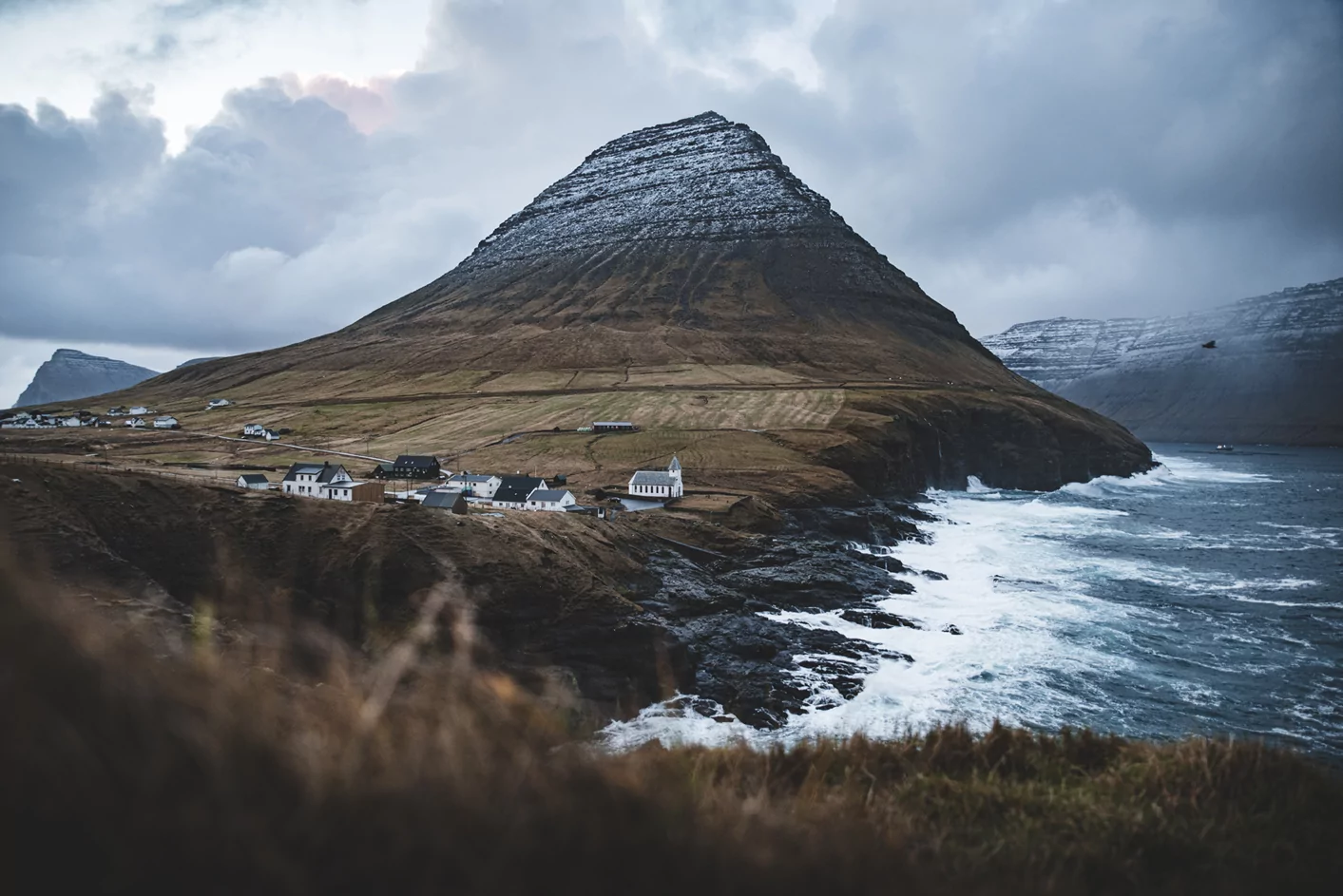
Viðareiði
photography by: Andri Gerðisá
Completely surrounded by a craggy mountain ridge, the village of Tjørnuvík is the northernmost village in Streymoy Island. Isolated by its topography, this serene rural community is a charming hideaway with a couple of hiking options around, yet its most striking feature is the direct and breathtaking vista of the sea stacks of the giant and the witch.
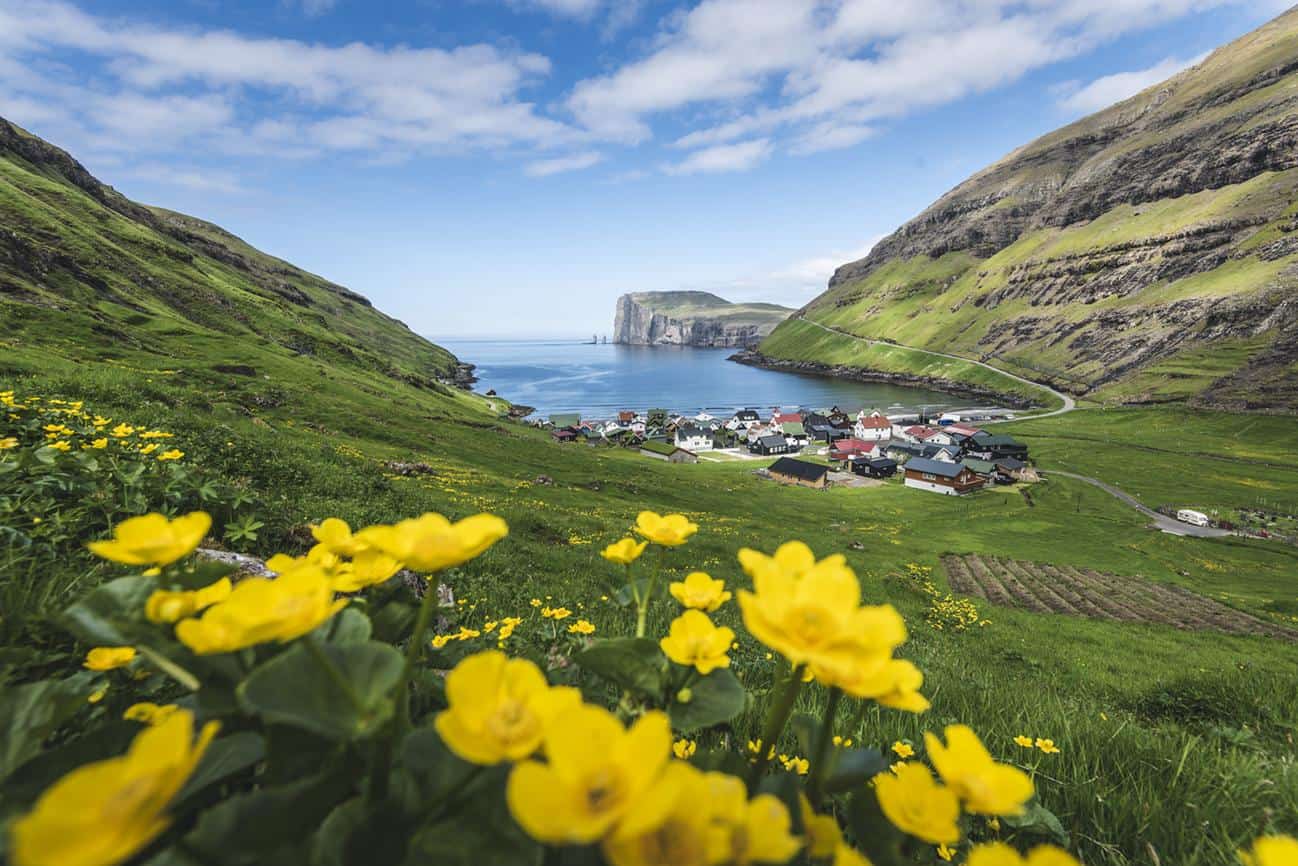
Tjørnuvík
photography by: Andri Gerðisá
What often comes to mind when thinking about green roofs? Probably the ultra-modern gardens topping contemporary skyscrapers and office building in many world cities, yet you’ll be surprised to learn that this practice is an age old tradition throughout the Faroes. Sod or turf roofs were actually a widespread method of insulation during the long and harsh winters in the Nordic countries since the 9th century, only recently replaced by the ubiquitous tiles.
Customarily, small square-shaped pieces of meadow grass with soil are being cut, and then placed on a layer of birch bark that was evenly spread on a sloped wooden roof, albeit modern techniques differ greatly and mostly based on steel sheeting and waterproofed membranes.
In an attempt to preserve their unique culture and national identity, the Faroese islanders not only made tremendous efforts to maintain the myriads of sod-roofed houses, but also constructing new ones as part of an architectural revival process. Nowadays, the grassy roofs are a common sight in the archipelago, even in larger towns, including the capital city, nevertheless, there are few iconic sites where this exceptional tradition is manifested in such a way that fully captivates the eyes and mind of any beholder.
Funningur Church in the village of Funningur in Eysturoy Island is one of only ten wooden churches throughout the islands. Adorned by its greenish sod roof, the building serves as a clear example of traditional Faroese architecture.
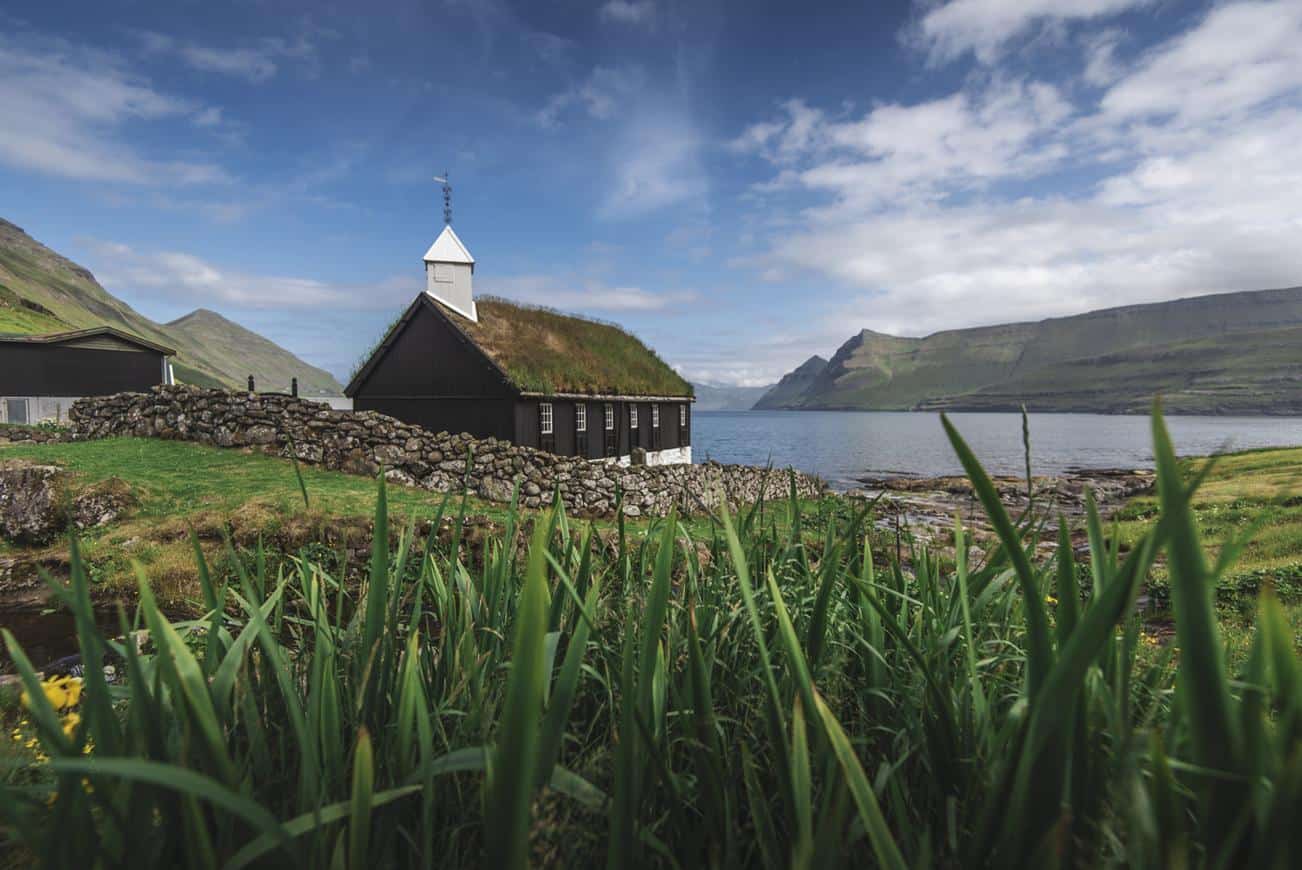
Funningur Church
photography by: Andri Gerðisá
Accessible solely by helicopter, the Island of Koltur is one of the smallest in the archipelago.

Island of Koltur
photography by: Andri Gerðisá
The island was inhabited for centuries, yet eventually it was completely deserted in the 1980’s, and a decade later was repopulated again, when two farmers set their residence in Norðuri í Gerði. The current island’s population stands at mere one, making it the least populated island among the inhabited islands across the Faroese archipelago.
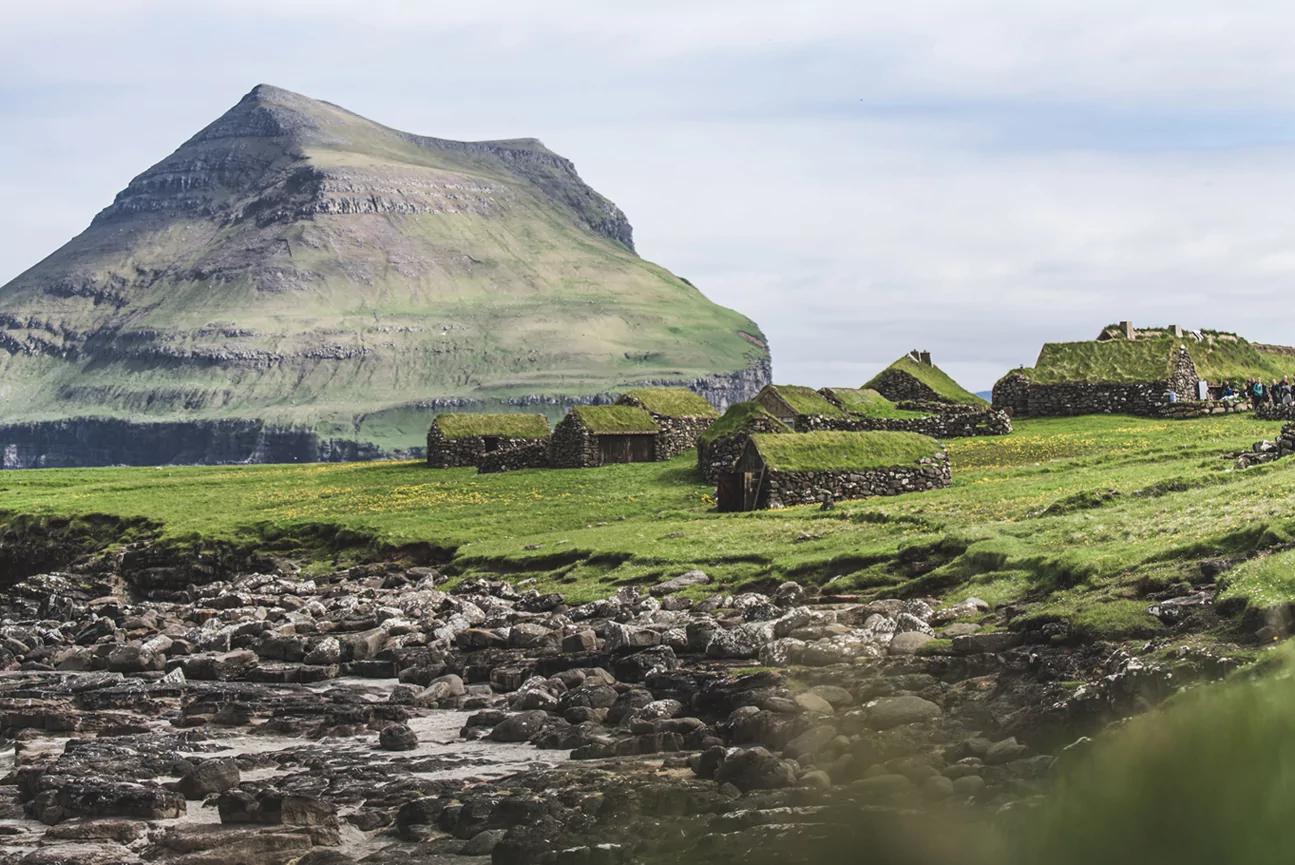
Island of Koltur
photography by: Andri Gerðisá
Despite its depopulation, the island’s only village, Koltur, is well preserved, offering an authentic glimpse to the Faroese architectural legacy.
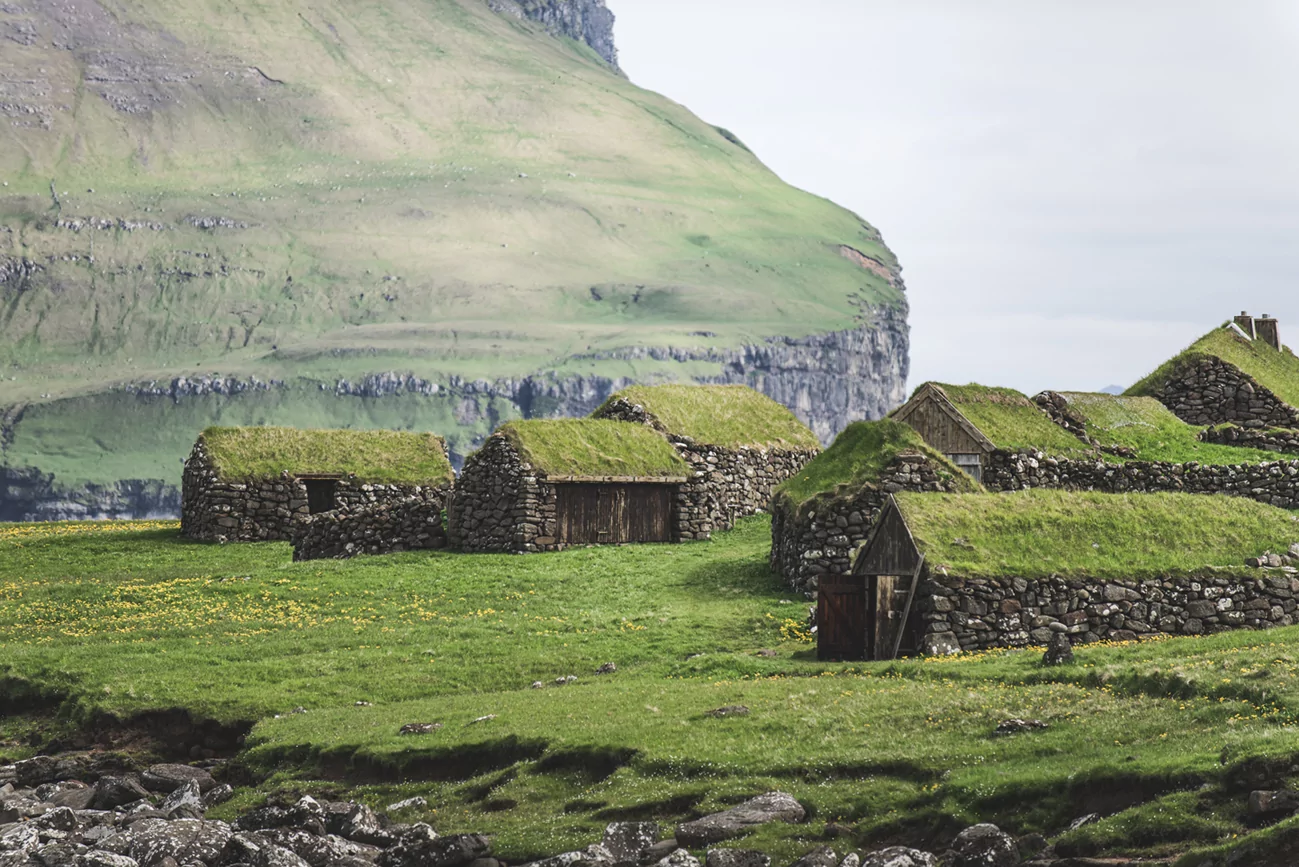
Island of Koltur
photography by: Andri Gerðisá
Situated at the end of Pollurin inlet, the village of Saksun is a rural hidden gem, most famous for its church, which was originally constructed in Tjørnuvík, then dismantled and reassembled again in Saksun, strikingly distinct by its grassy sloped roofs. Another worthy site is Dúvugarðar sheep farm, currently functioning as an open-air museum for Faroese village life.
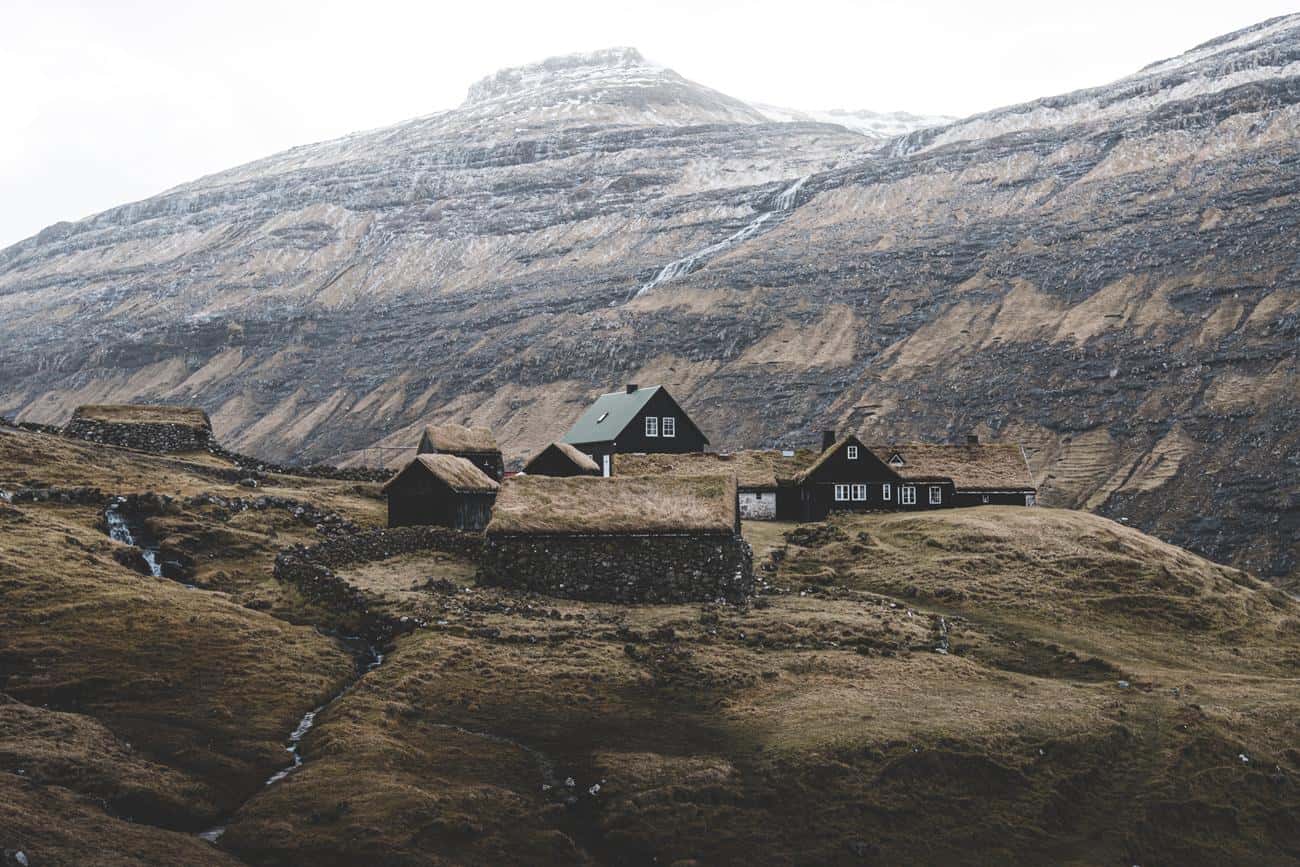
Saksun
photography by: Andri Gerðisá
Located just 10 minutes away by car from Tórshavn, the village of Velbastaður is practically a suburb of the capital. Its proximity to Tórshavn made it a popular getaway for many islanders who sought a rural life without getting too far from the country’s economic center.
Dominated by many sod roofed buildings, some of which are flat ones, the village has a laid back atmosphere, accompanied by incredible ocean views. One of its most renowned highlights is Anna Og Óli, a restaurant focusing on modern Faroese cuisine, pilgrimaged by dedicated foodies from all over the world.
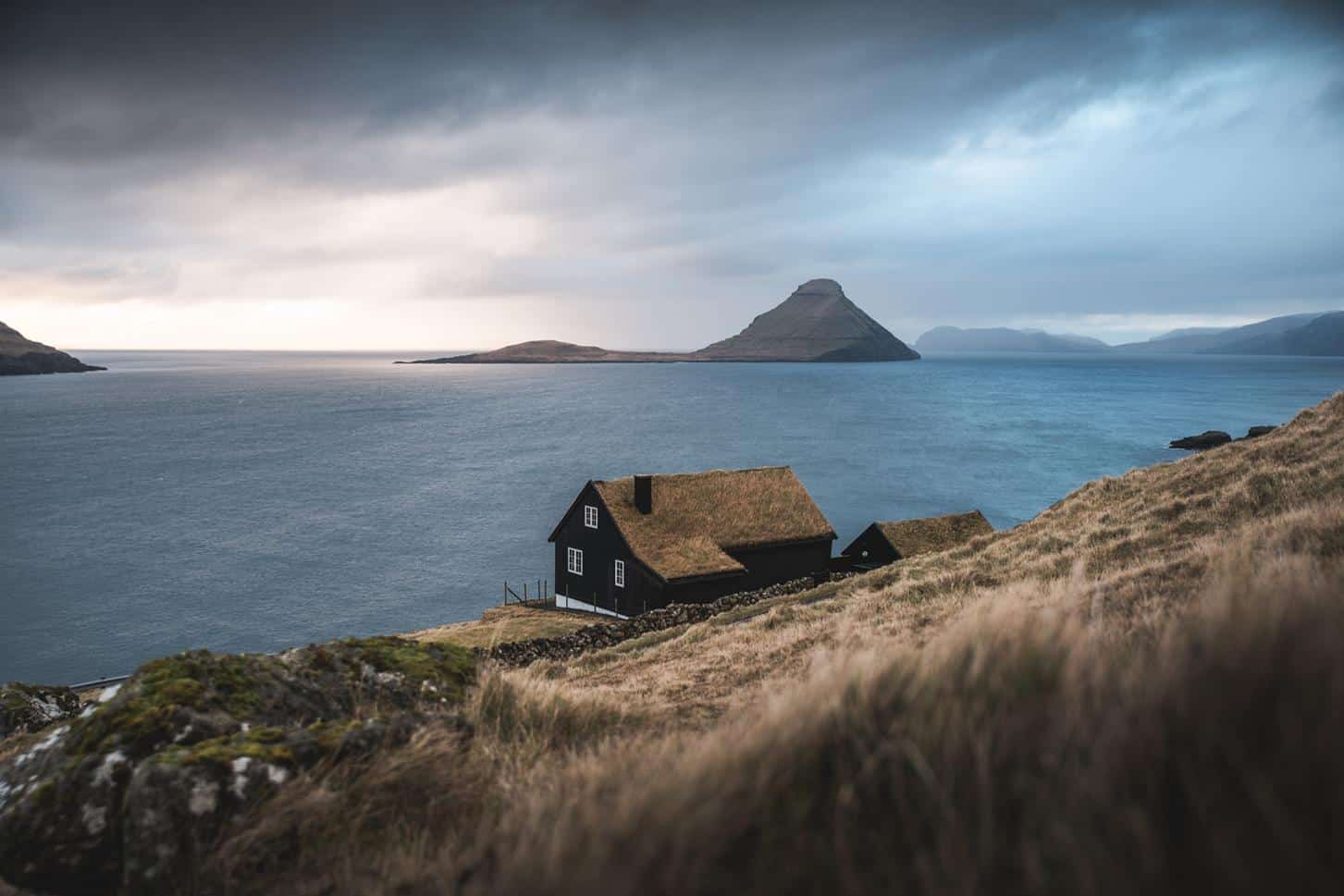
Velbastaður
photography by: Andri Gerðisá
Born and raised in the Faroe Islands, I work as a graphic designer and photographer at a Faroese shipping/traveling company that links the Faroe Islands with Denmark and Iceland.
Photography is a big passion of mine, particularly landscape photography, encompassing the bulk of my works in recent years.
I’m a family man, yet when time is available, I try to venture out as much as possible, and explore the outstanding Faroese nature. My main goal is to capture this country from a different and ultra-exceptional perspective, revealing the sheer beauty this archipelago is bestowed with.
Check out my Instagram for more photos from the Faroe Islands.
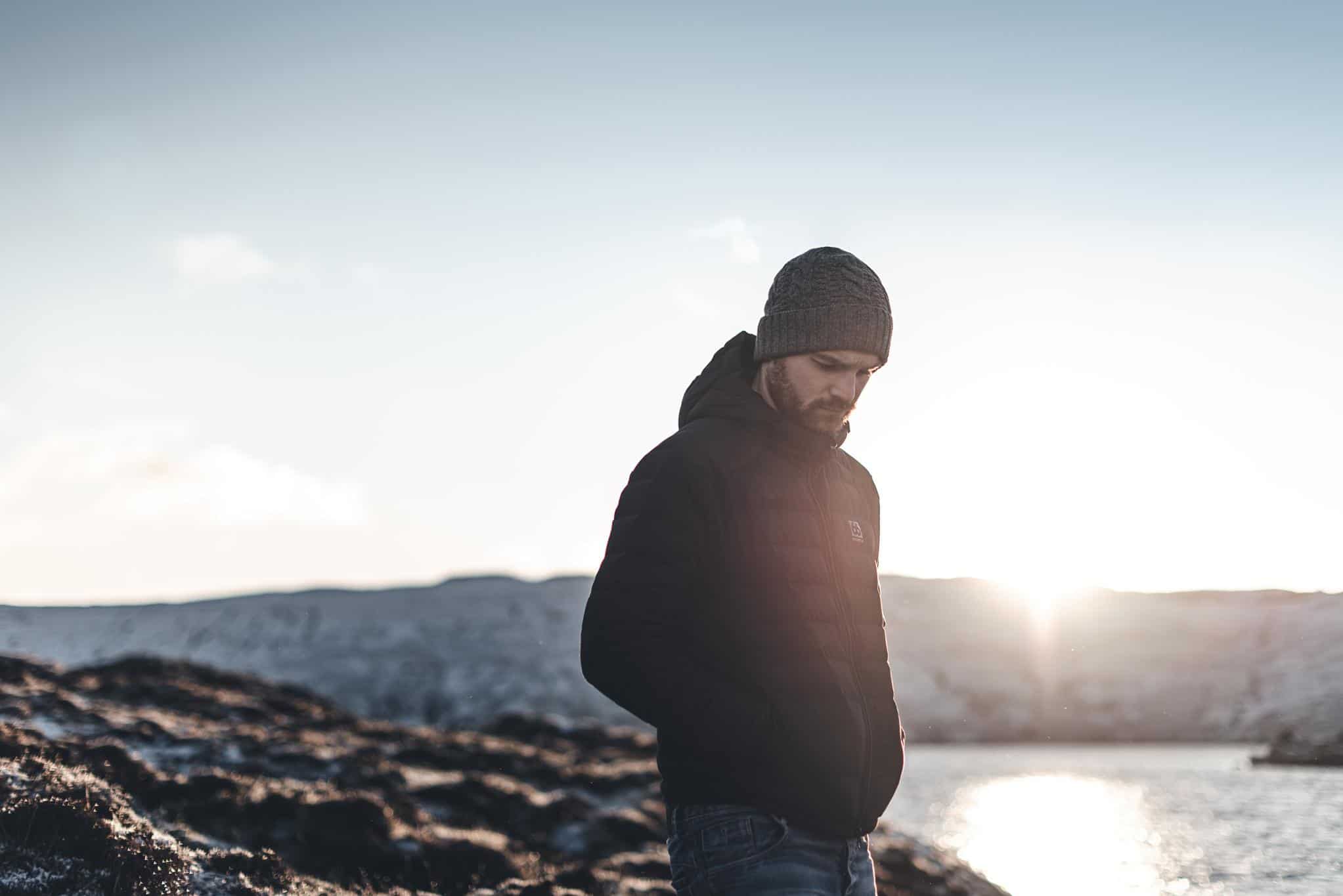
photography by: Andri Gerðisá